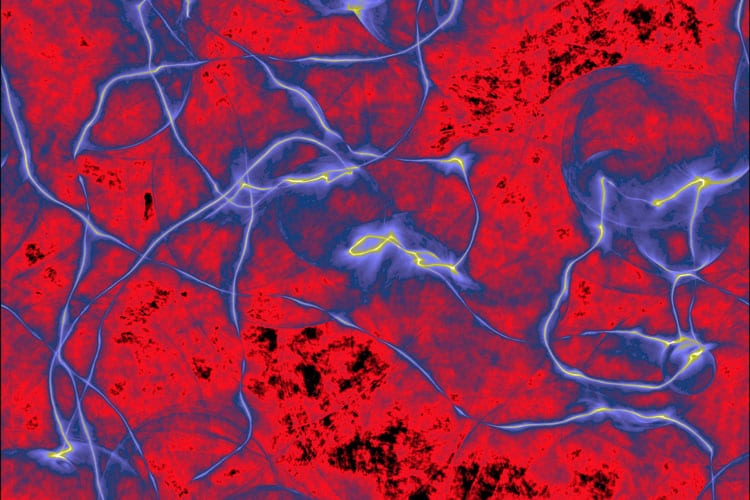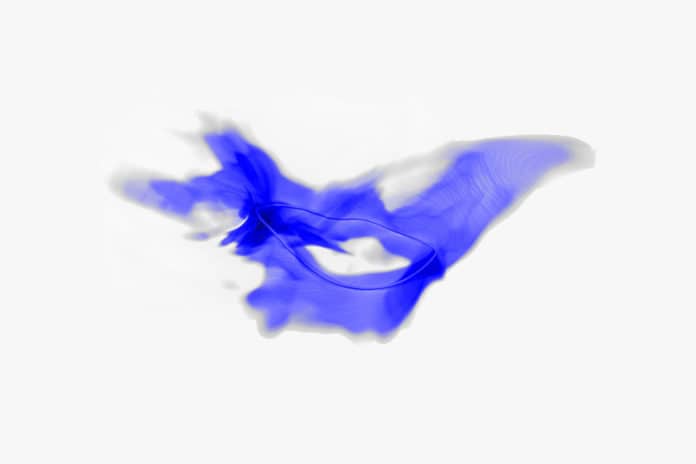Axion is the most favored candidate for dark matter. They are incredibly light and reluctant to interact with ordinary matter. Axions would clump together in exactly the same way as the dark matter would.
Scientists produced a new supercomputer simulation of how axions were created shortly after the Big Bang 13.6 billion years ago using new calculational techniques and one of the world’s largest computers. The simulations suggest that physicists were looking for axions in the wrong place.
Benjamin Safdi, assistant professor of physics at the University of California, Berkeley; Malte Buschmann, a postdoctoral research associate at Princeton University; and colleagues at MIT and Lawrence Berkeley National Laboratory– created a supercomputer simulation of the period when axions would have been produced, just few billion seconds after Universe came live.
The simulation also revealed the mass of the axion. It is more than twice as big as previously thought: between 40 and 180 microelectron volts (micro-eV, or μeV), or about one 10-billionth the mass of the electron.
Safdi said, “There are indications that the mass is close to 65 μeV. Since physicists began looking for the axion 40 years ago, estimates of the mass have ranged widely, from a few μeV to 500 μeV.”
To detect these elusive particles, a microwave resonance chamber is used. The chamber contains a strong magnetic field, through which scientists hope to snag the conversion of an axion into a faint electromagnetic wave. Still, scientists could not detect the particles.
For this, the chamber needs to be small by a few centimeters on a side to detect the higher-frequency wave from a higher-mass axion. That volume would be too small to capture enough axions for the signal to rise above the noise.
Safdi said, “Our work provides the most precise estimate to date of the axion mass and points to a specific range of masses that are not currently being explored in the laboratory. I do think it makes sense to focus experimental efforts on 40 to 180 μeV axion masses, but there’s a lot of work gearing up to go after that mass range.”
The plasma haloscope is another experiment that probes axion excitations in a metamaterial called a solid-state plasma. The experiment should be sensitive to an axion particle of this mass and could potentially detect one.
Axion top candidate for dark matter
Nobody knows what exactly dark matter is. What’s known is it outweighs visible matter roughly six to one, making up about 27% of the Universe.
Safdi said, “We suspect it is a new particle we don’t know about, and the axion could be that particle. It could be created in abundance in the Big Bang and be floating out there explaining observations that have been made in astrophysics.”
In 1978, the axion was proposed as a new elementary particle explaining why the neutron’s spin does not precess or wobble in an electric field. The theory suggests that the axion suppresses this precession in the neutron.
Safdi said, “Still to this day, the axion is the best idea we have about how to explain these weird observations about the neutron.”
In the 1980s, axion was considered a candidate for dark matter. At that time, scientists used the Standard Model along with the theory of the Big Bang, the Standard Cosmological Model, to calculate the axion’s precise mass. However, the equations are so tricky that we have only estimates with variations to date.
Safdi said, “With these axion experiments, they don’t know what station they’re supposed to be turning to, so they have to scan over many different possibilities.”
In this new study, scientists calculated the most recent, though incorrect, axion mass. But as they worked on improved simulations, they approached a team from Berkeley Lab. The team had developed a special code for a better simulation technique called adaptive mesh refinement.
A 3D grid was represented as a small part of the expanding Universe during simulations. Scientists solved the equation over these grids.

In adaptive mesh refinement, the grid is made more detailed around areas of interest and less detailed around areas of space where nothing much happens. This concentrates computing power on the most important parts of the simulation.
Through this technique, scientists could see thousands of times more detail around the areas where axions are generated. This enabled scientists to precisely determine the total number of axions produced and, given the total mass of dark matter in the Universe, the axion mass.
After the inflationary epoch, the simulation showed that little tornadoes, or vortices, form like ropey strings in the early Universe and throw off axions like riders bucked from a bronco.
Safdi said, “You can think of these strings as composed of axions hugging the vortices while these strings whip around forming loops, connecting, undergoing a lot of violent dynamical processes during the expansion of our Universe, and the axions hugging the sides of these strings are trying to hold on for the ride. But when something too violent happens, they just get thrown off and whipped away from these strings. And those axions which get thrown off of the strings end up becoming the dark matter much later on.”
“By keeping track of the axions that are whipped off, we could predict the amount of dark matter that was created.”
“We solve for the axion mass both in a more clever way and also by throwing just as much computing power as we could find onto this problem. We could never simulate our entire Universe because it’s too big. But we don’t need to stimulate our entire Universe. We need to simulate a big enough patch of the Universe for a long enough period, such that we capture all of the dynamics that we know are contained within that box.”
Once simulations give an even more precise mass, the axion may be easy to find.
Journal Reference:
- Dark matter from axion strings with adaptive mesh refinement, Nature Communications (2022). DOI: 10.1038/s41467-022-28669-y
